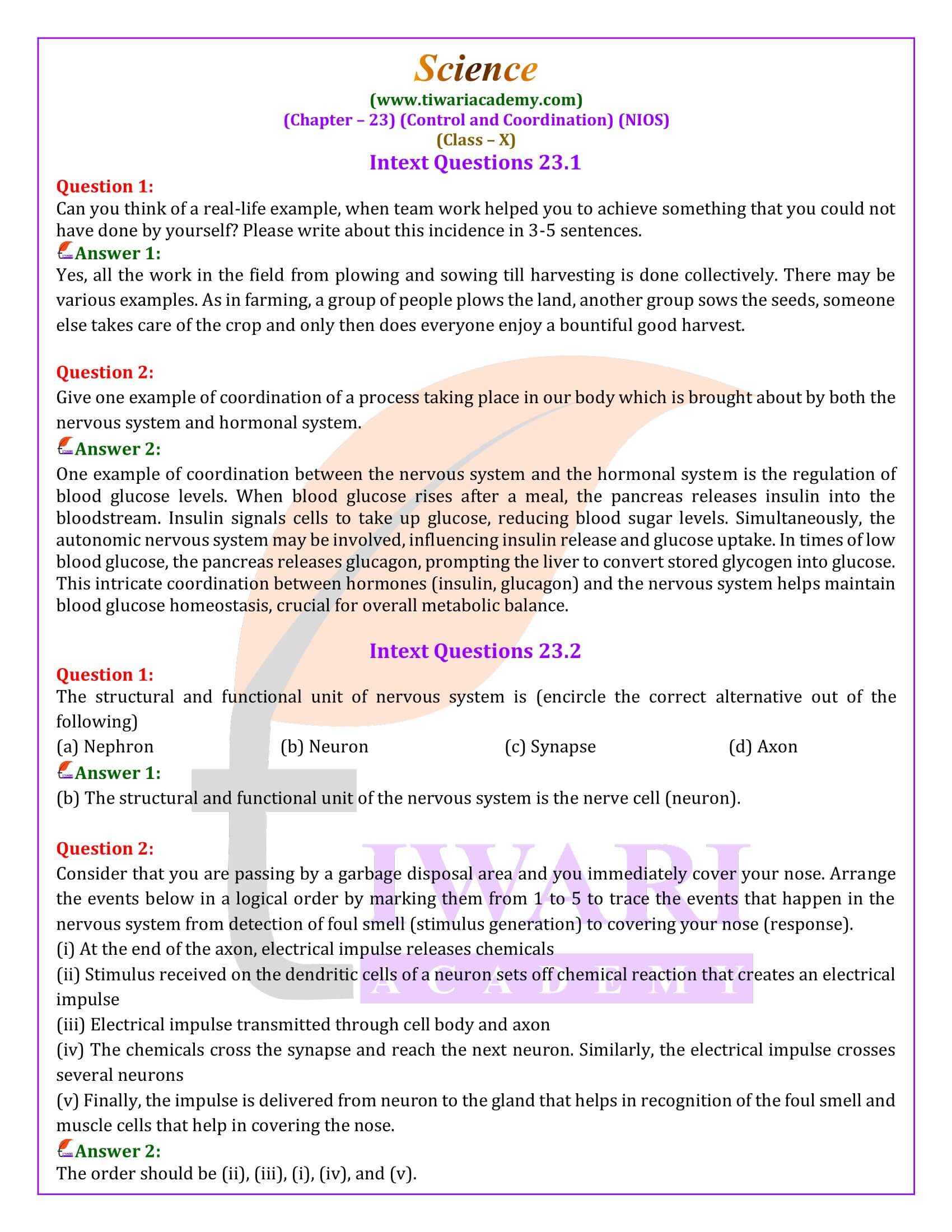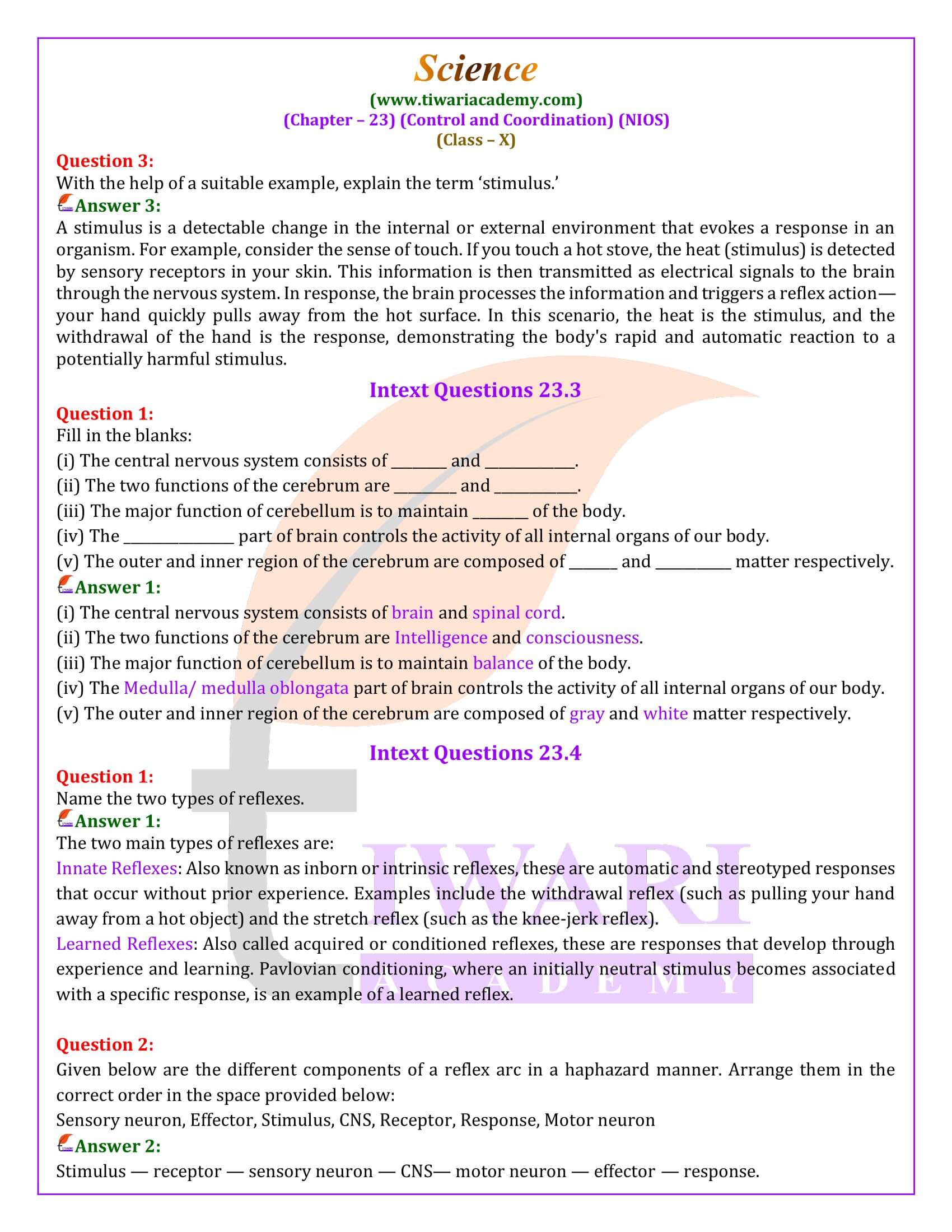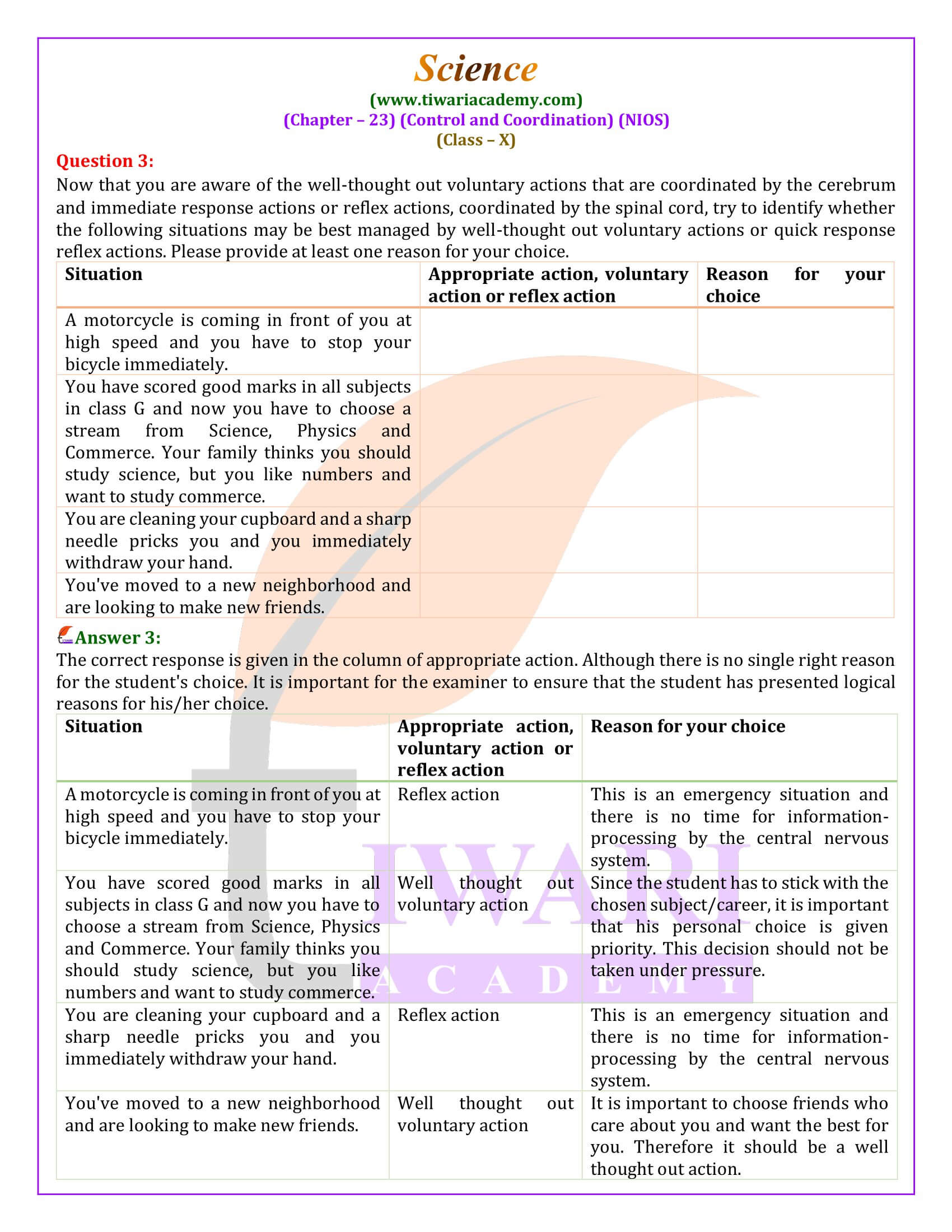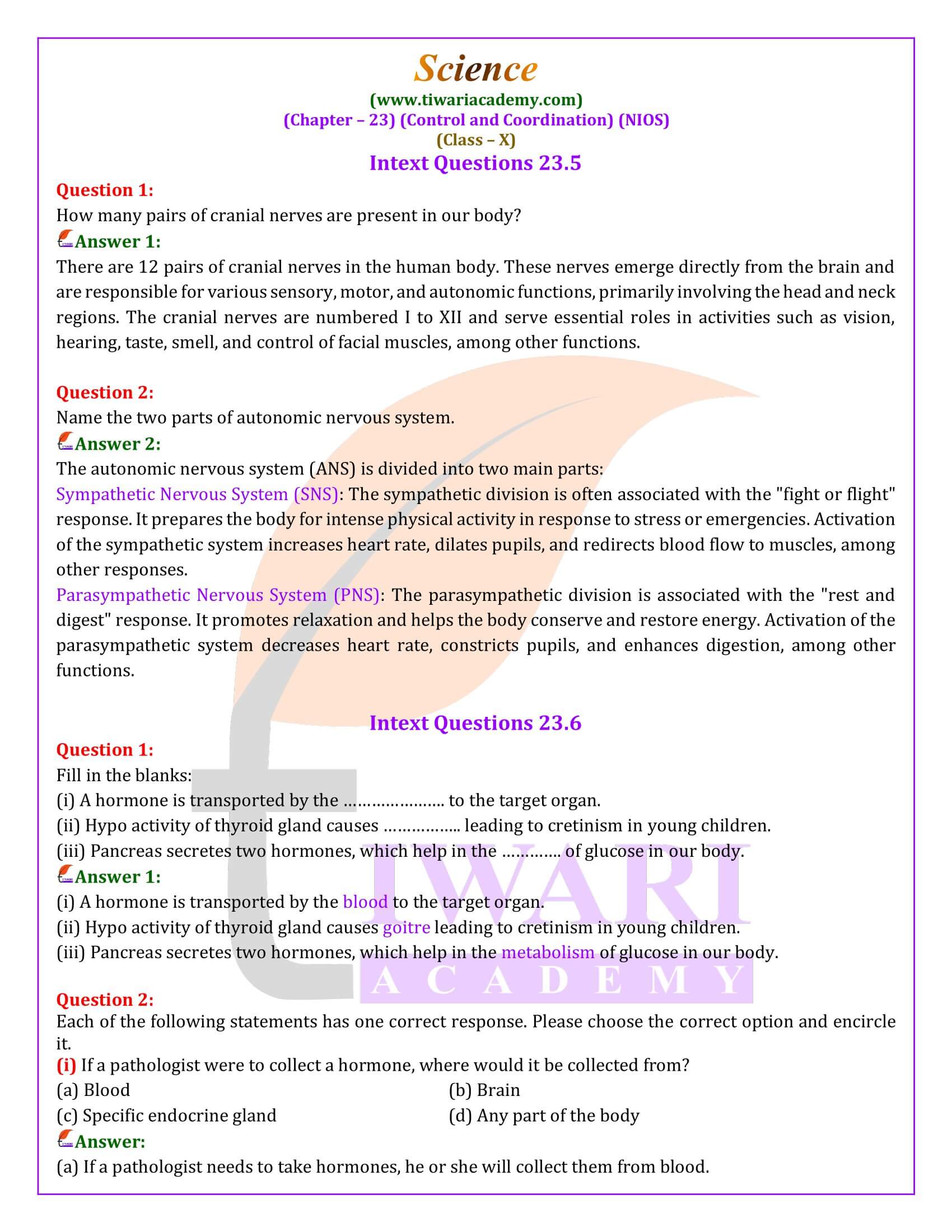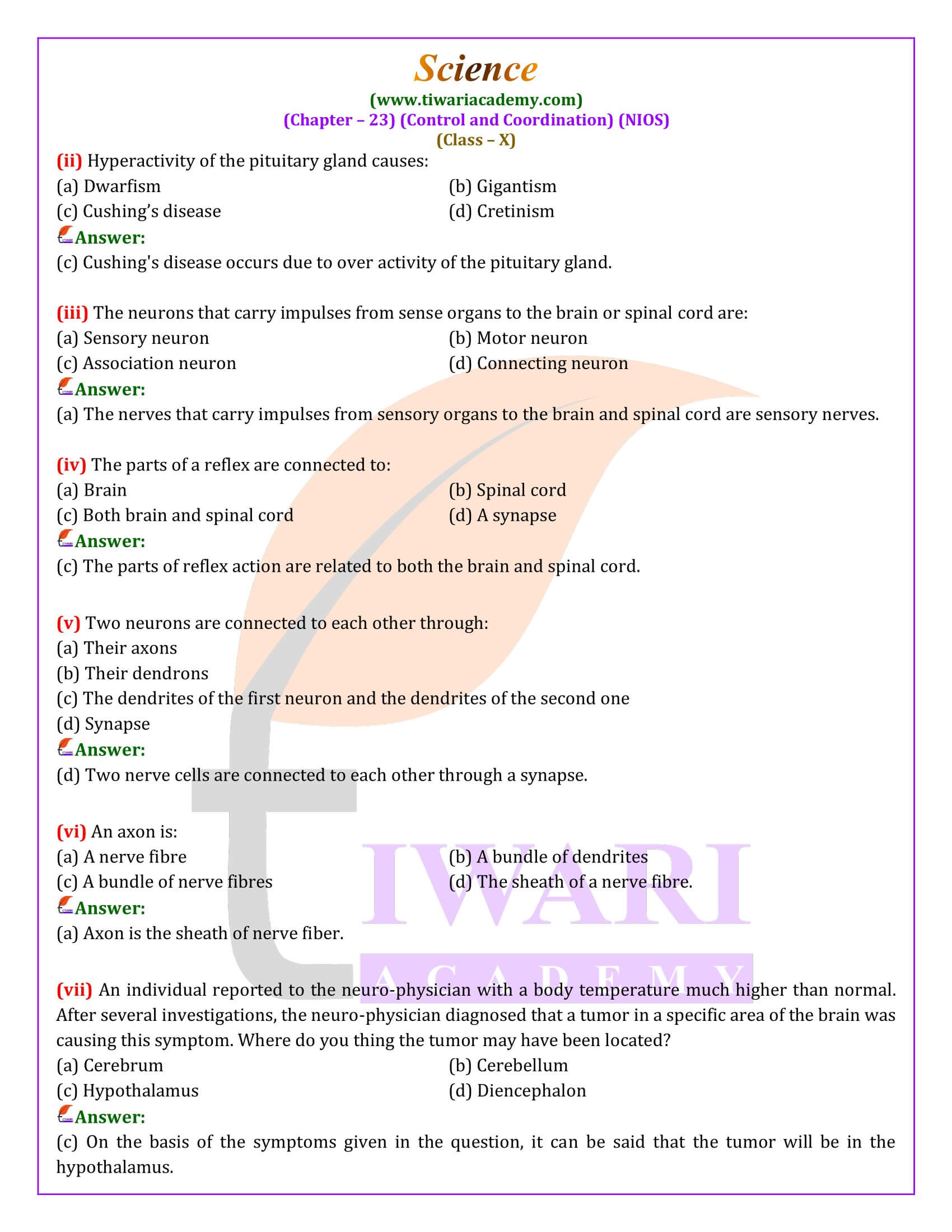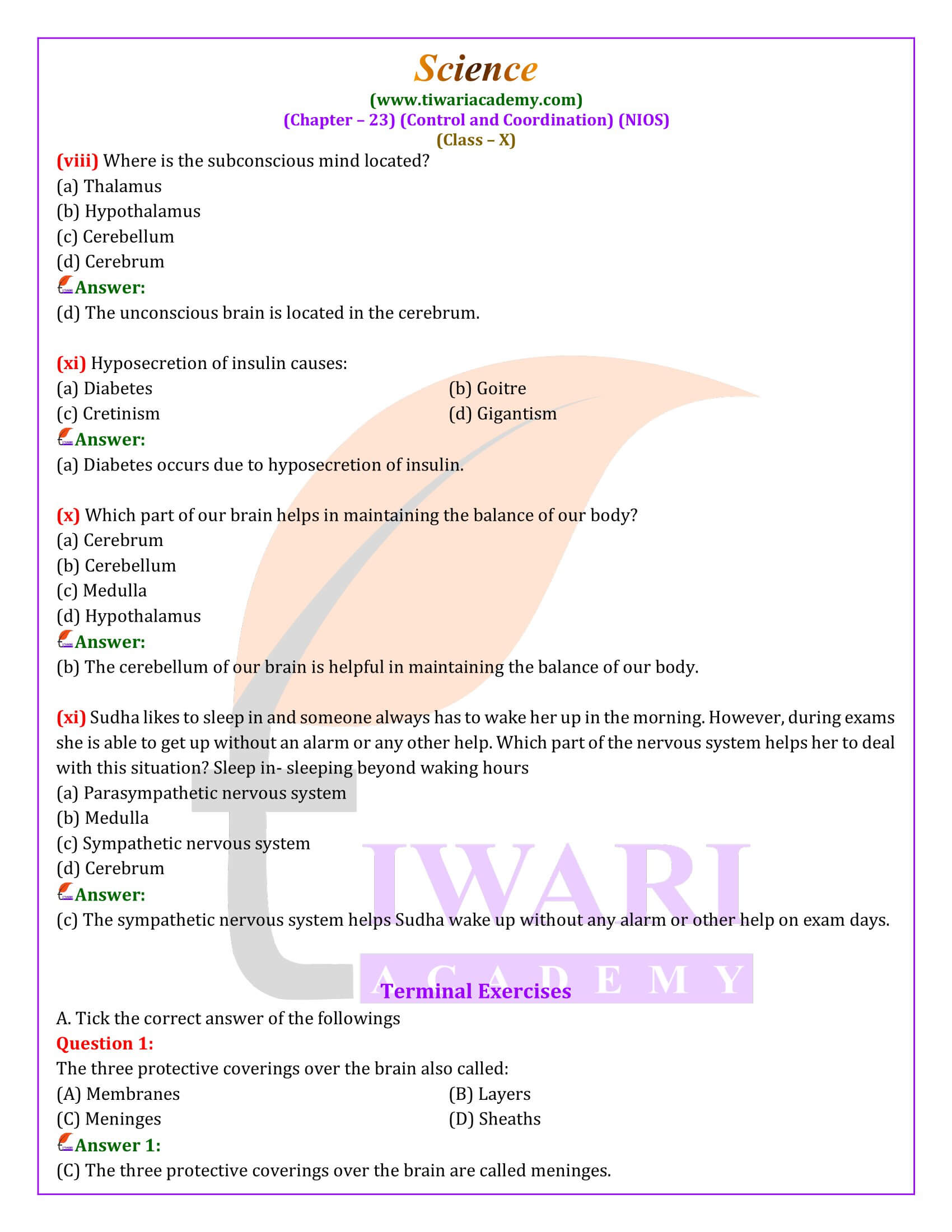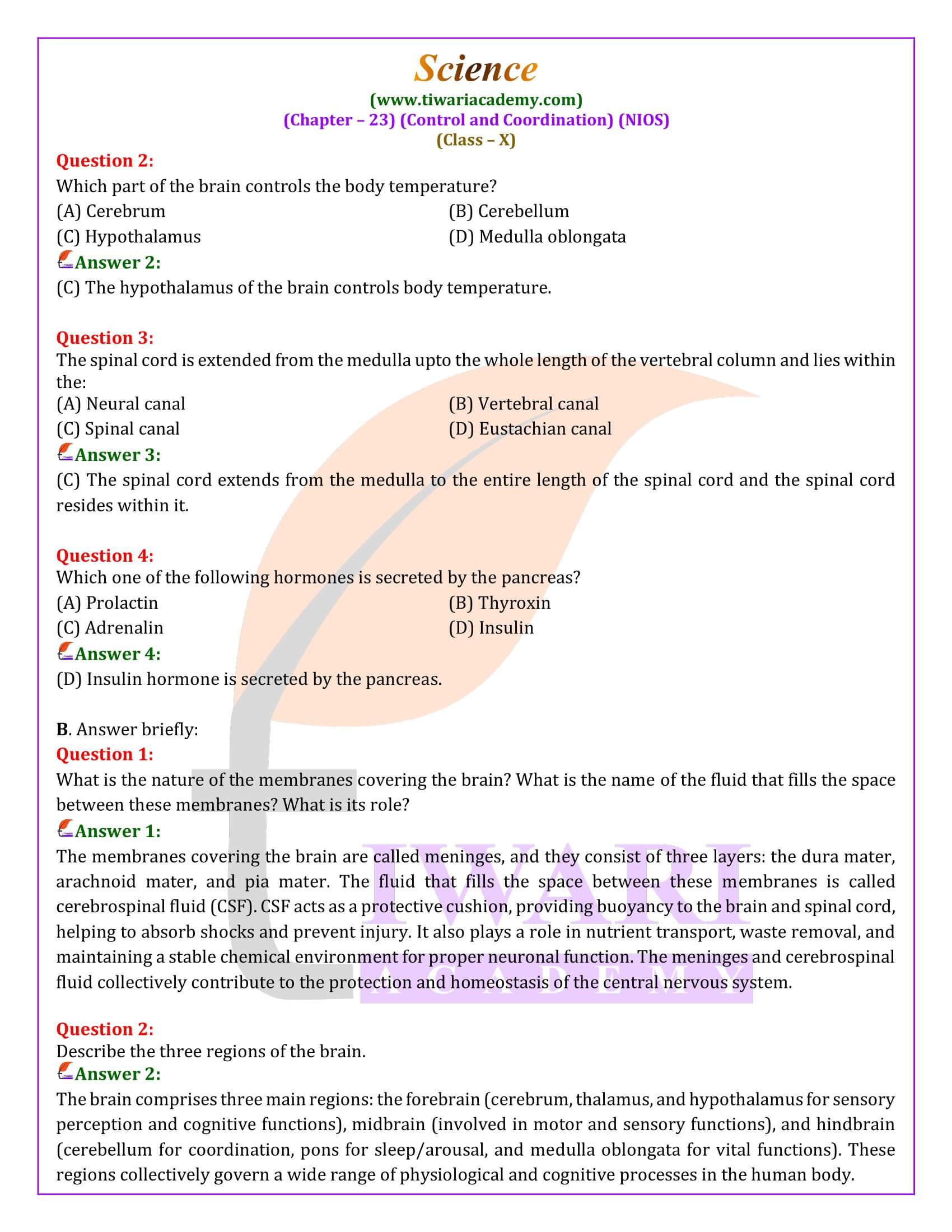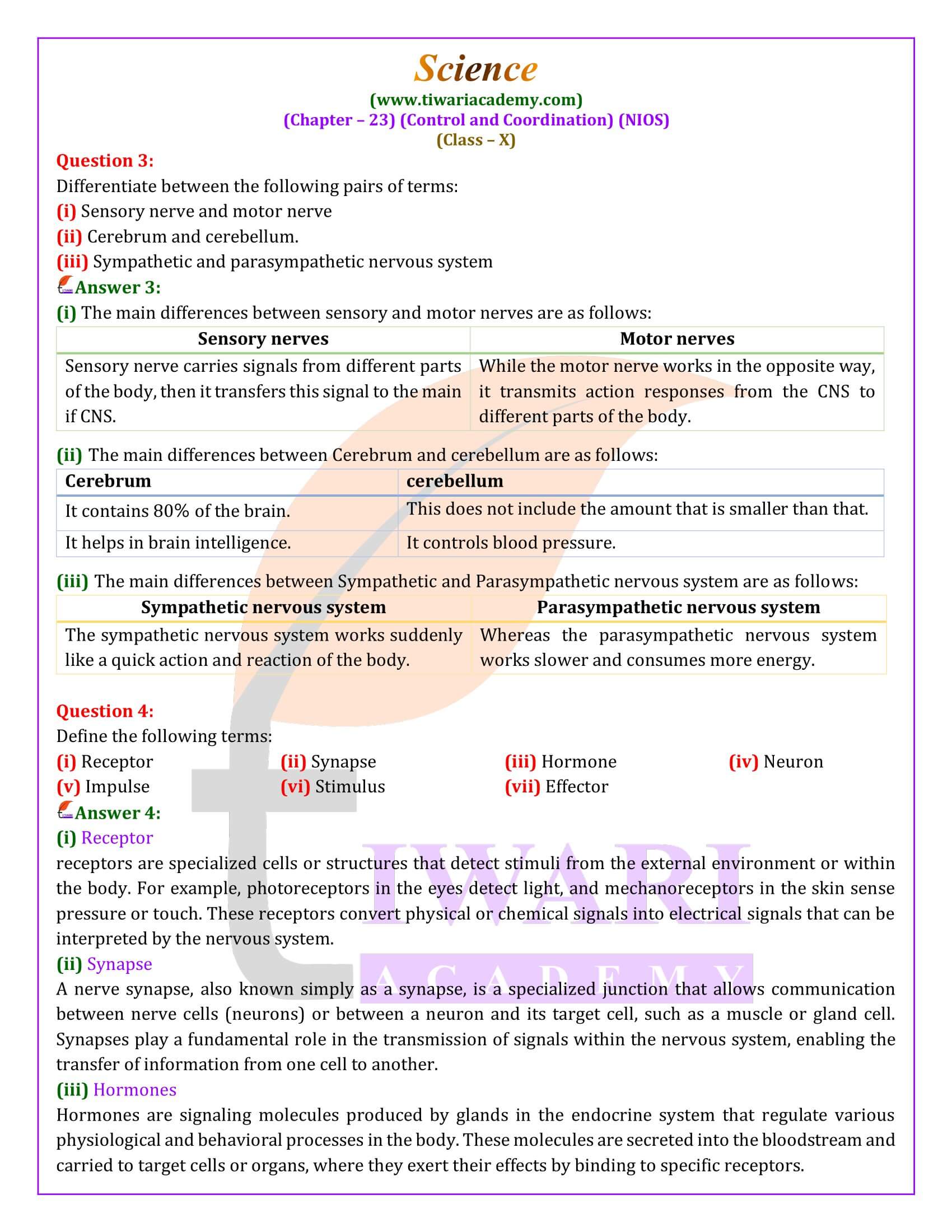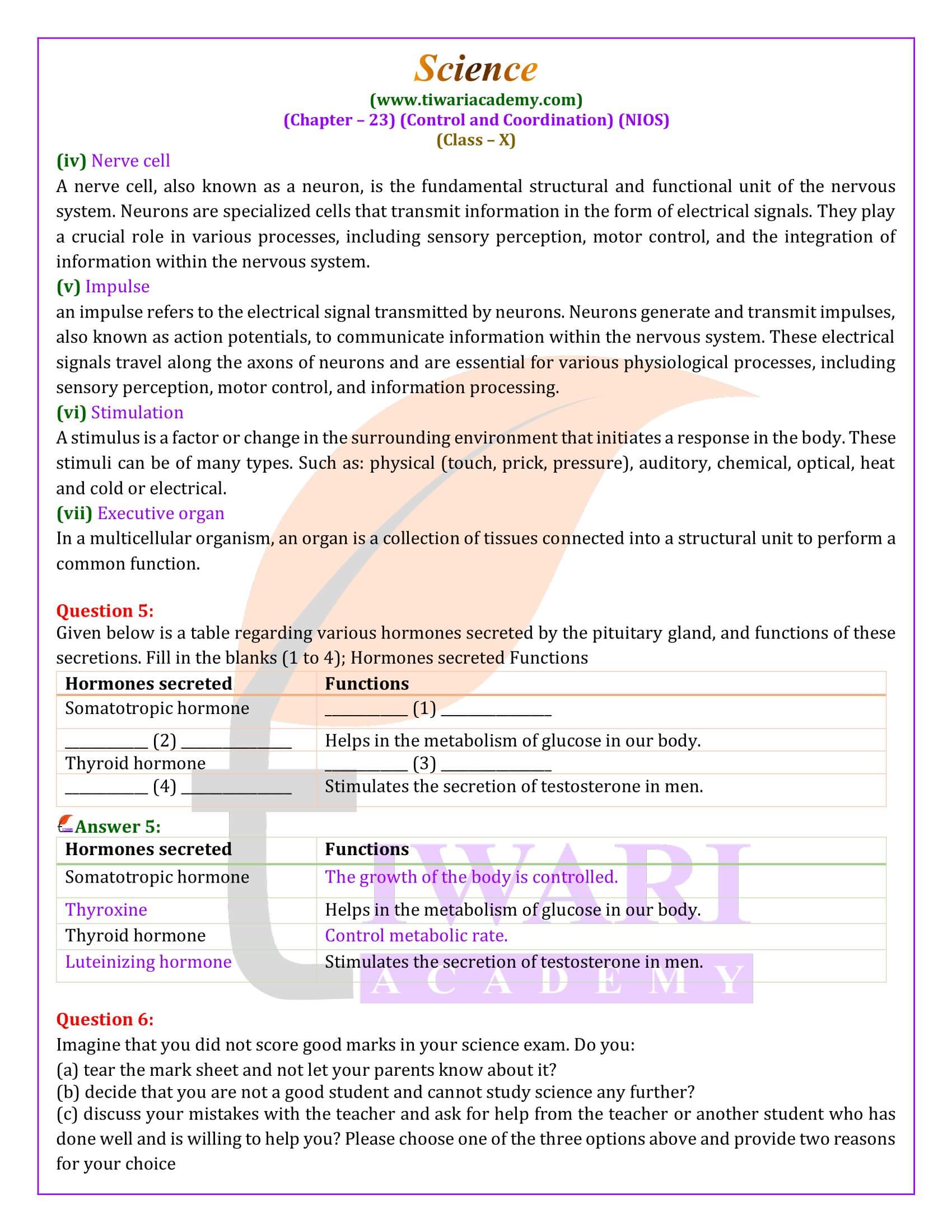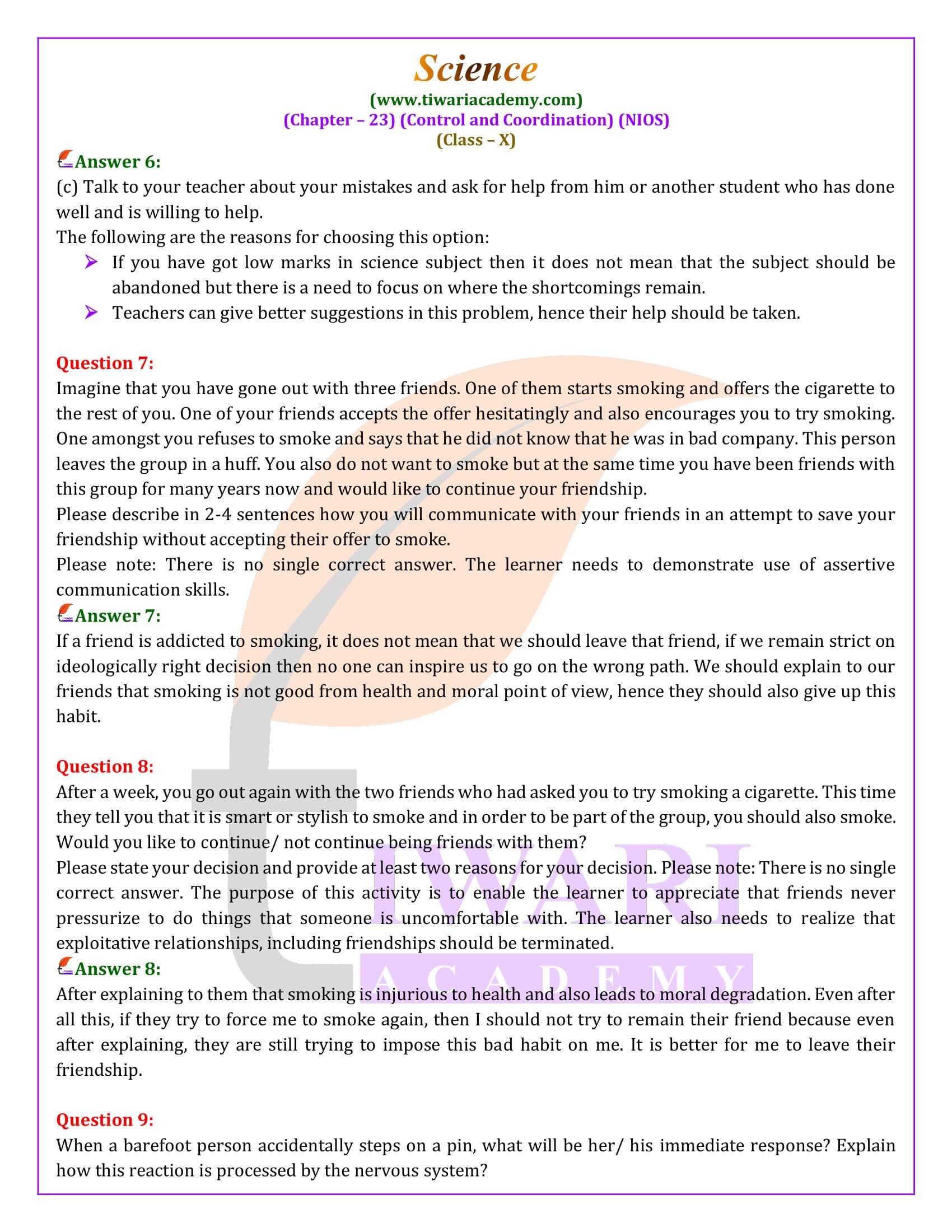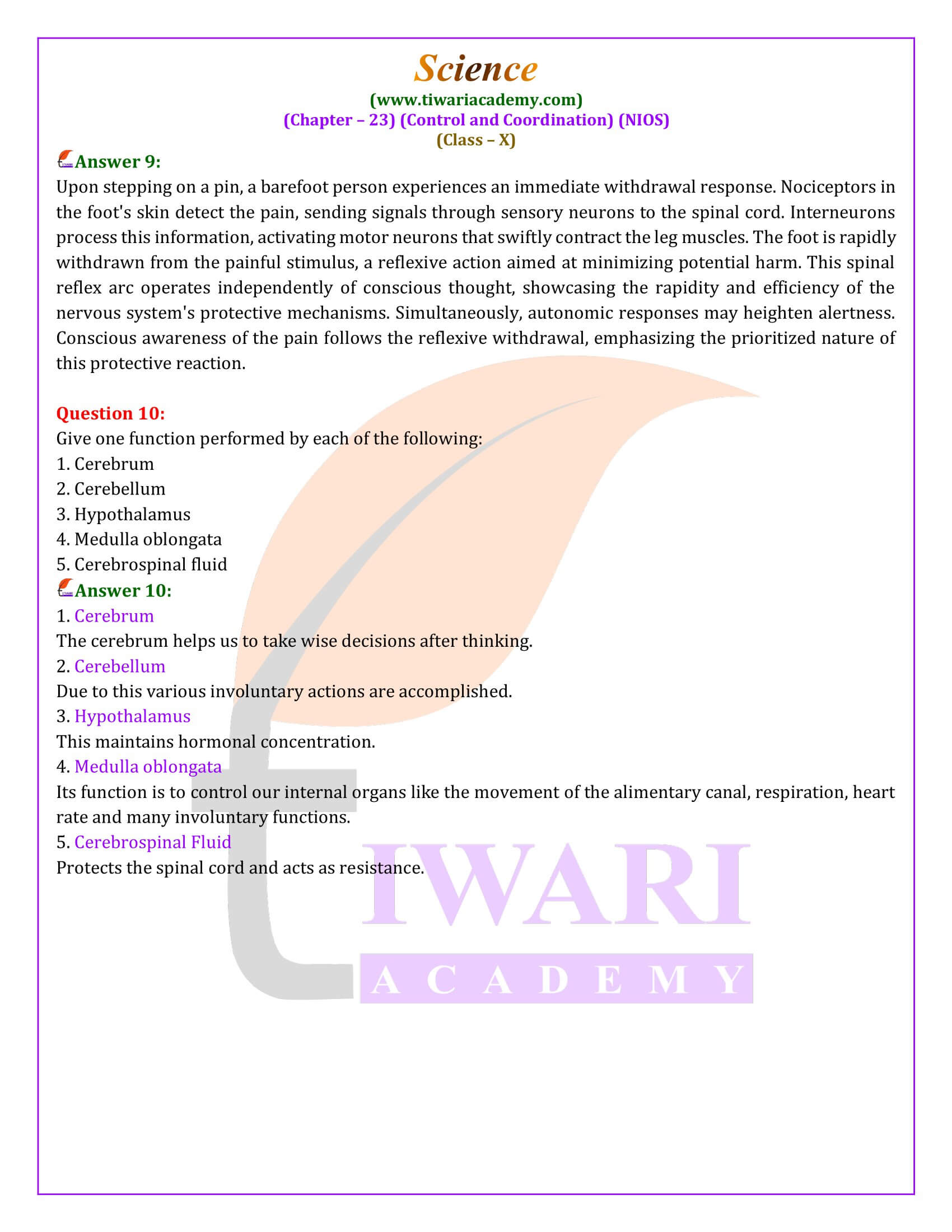NIOS Class 10 Science Chapter 23 Life Processes II: Control and Coordination in Hindi and English Medium updated for new academic session 2025-26. The NIOS Class 10 Science Chapter 23 deals with the concepts of chemical and fluid coordination in a humans.
NIOS Class 10 Science Chapter 23 Life Processes II: Control and Coordination
Life Processes II: Control and Coordination
Understanding the Complex Systems of Control and Coordination in the Human Body
NIOS Class 10 Science Chapter 23 describes the fascinating realm of the human body’s control and coordination mechanisms, emphasizing the critical roles of the nervous and endocrine systems. These systems ensure that various bodily functions operate in harmony, facilitating a seamless integration and coordination across different organs and systems.
Nervous and Endocrine Systems: The Central Players
The nervous system, comprising the brain, spinal cord, nerves, and sense organs, works closely with the endocrine system, which influences bodily functions through chemical messengers known as hormones. These hormones are produced by specific glands and are crucial for the regulation of activities ranging from growth to metabolism and mood regulation.
The interplay between these systems enables humans to perform complex tasks, regulate essential functions, and maintain homeostasis despite external changes. For instance, the process of eating involves not just the mechanical actions of picking up food and chewing but also the intricate chemical processes of digestion facilitated by hormonal and neural signals that ensure the body’s energy needs are met without conscious effort.
Reflex Actions and Voluntary Movements
A significant portion of NIOS Class 10 Science Chapter 23 is dedicated to explaining how reflex actions, such as quickly withdrawing a hand from a hot surface, are managed by the spinal cord, while more complex, deliberate actions are directed by the brain. This distinction highlights the body’s ability to respond instantaneously to certain stimuli, thereby protecting itself from harm, while also being capable of thoughtful interaction with the environment through voluntary movements.
Learning and Adaptation: The Role of Neurons
The detailed exploration of neuron structure and function sheds light on how these cells transmit information within the body. The description of synapses and neurotransmitters illustrates the complex communication network that enables learning and memory. This neural communication is fundamental to both reflexive responses and sophisticated cognitive processes such as planning, reasoning, and emotional responses.
Endocrine System: Beyond Immediate Responses
NIOS Class 10 Science Chapter 23 also provides an in-depth look at the endocrine system, focusing on how hormones affect long-term processes like growth, metabolism, and sexual development. Disorders related to hormone imbalances are discussed to emphasize the system’s importance in overall health and well-being. The narrative explains how hormones like insulin and thyroid hormones play pivotal roles in everyday health, influencing everything from blood sugar levels to metabolic rates.
Interactive Elements and Practical Applications
The inclusion of questions and activities throughout NIOS 10th Science Chapter 23 encourages readers to apply their knowledge practically. These elements help solidify understanding by asking readers to think critically about how they would handle real-life situations using the information about the nervous and endocrine systems.
NIOS Class 10 Science Chapter 23 provides a comprehensive overview of how the human body’s control and coordination are managed through an intricate network of nervous and endocrine systems. It beautifully ties together the mechanical and chemical processes that keep us alive and functioning, highlighting the complexity and elegance of our biological systems.
